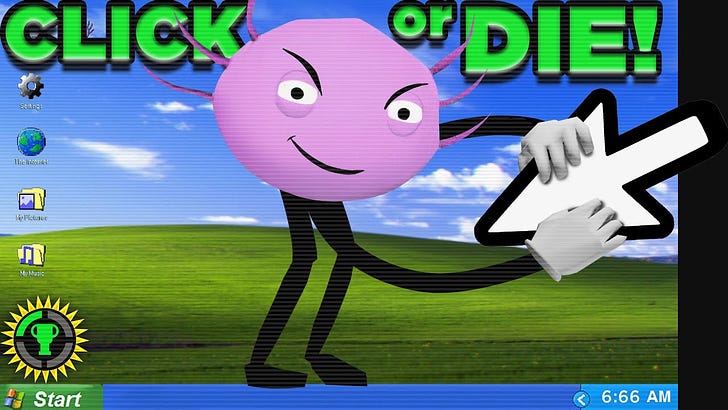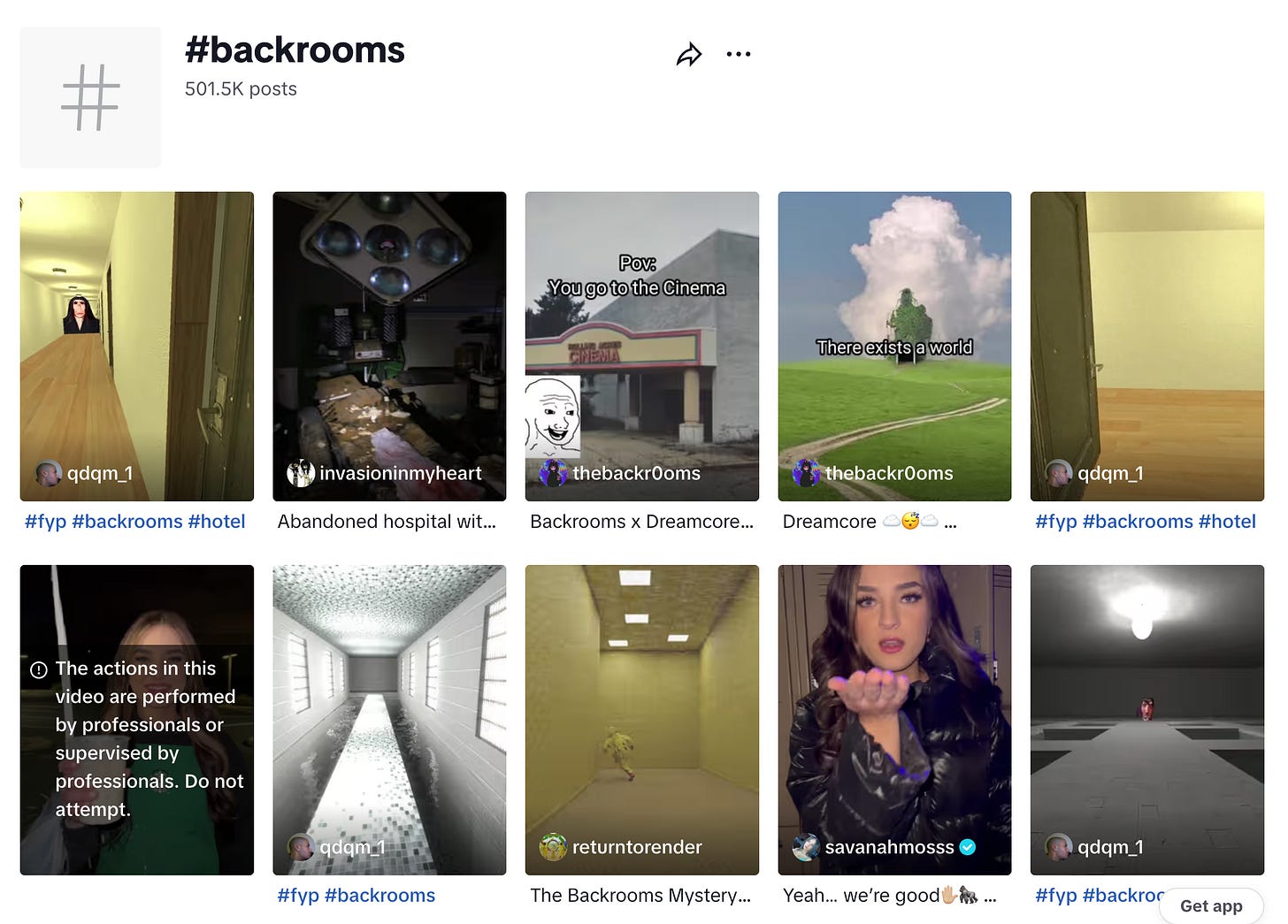Welcome to Gen Z Translator, where I break down trending topics on Fridays. If you’re new, you can subscribe here and follow me on X/Twitter or Threads. Views are my own. Happy reading!
Note: This article explores the horror genre in media. If you’re not into that sort of thing, click away! This is also a note that I’m nowhere near an expert on video games or the horror genre :P
Let’s talk about KinitoPet.exe. But first, let’s go back a couple years.
Creepypasta was a weird internet sub-genre in the 2010s. Think “Slender Man.” Fanatics liked disturbing Mickey Mouse characters and abandoned shopping malls. Horror was seeping into digitization in the form of computer virus files like Sonic.exe.
According to Wikipedia (always a reliable source), creepypasta is a “horror-related legend which has been shared around the Internet. The term creepypasta has since become a catch-all term for any horror content posted onto the Internet.”
Now, it’s not Halloween, so why am I bringing this up? I have a theory that creepypasta has returned, most notably in the form of video game lore1.
Horror entrances its audience because it raises questions. Who, what, where, when, why, you know the deal. It’s fascinating. The concept of creepypasta has always been that the story of the thing is more interesting than the thing itself. Slender Man is scary, but not as scary as his missing whereabouts or unknown identity.
The backrooms, for instance, saw a resurgence in 2021 and 2022 on TikTok. These videos go “through the backrooms” – endless, empty hallways understood as liminal internet space. The journey through them builds suspense. Surprise, surprise, usually a jumpscare follows. Many horror games contain elements of this idea.
The backrooms don’t have lore, per say, but their popularity does point to continued interest in the idea.
Let’s go back to Wikipedia’s phrasing that “creepypasta has since become a catch-all term for any horror content posted onto the Internet.” The definition is broad, but the aesthetic is niche. One YouTube account shows a return to this subculture the best.
The Game Theorists. Made popular by host MatPat and his Five Nights at Freddy’s explanations, this account is the most notable lore-explorer for all sorts of video games. Those communities then run wild with the theory or create alternative explanations, leading the story to become a “horror-related legend which has been shared around the Internet.”
I was most prominently reminded of creepypasta when a few YouTubers I liked posted about a new game on the scene, KinitoPet.exe. *Spoilers* The concept is that you download a desktop helper who ends up taking over your computer. Literally.
The gritty 90s aesthetic and horror-ification of a rather cute looking thing felt like déjà vu.
Intrigued, I made my way over to the Game Theorists, who were able to give me the backstory I couldn’t get from watching someone play it for the first time. (That video is at the top of this newsletter). As Tom, the host, spun his explanation, I was more and more sure. KinitoPet.exe was creepypasta.
So, we’ve come full circle, I thought. Instead of chat forums and email chains, the Game Theorists spin the tales in curated videos. Enthusiasts dive deeper into their respective fandoms on subreddits2 like r/PoppyPlaytime or r/FNAFtheories. TikTok serves users speculative, creepypasta-reminiscent content like the backrooms. KinitoPet gets its own Wiki.
The aesthetic of creepypasta has undoubtedly returned, this time fueled by mainstream internet culture rather than dark, digital corners. As is the hope for most creeypastas, the legend lives on.
Read my last video game story: Did someone say Sims movie?!
My weekly roundup:
🎶 What I’m Listening To: Good Luck, Babe! by Chappell Roan
🎞️ What I’m Watching: Survivor S46E7
📱 What I’m Scrolling: How many movies can Margot Robbie possibly make?
Read the full Gen Z Dictionary here.
Lore: The backstory of something
Subreddits: Niche, online communities on Reddit





